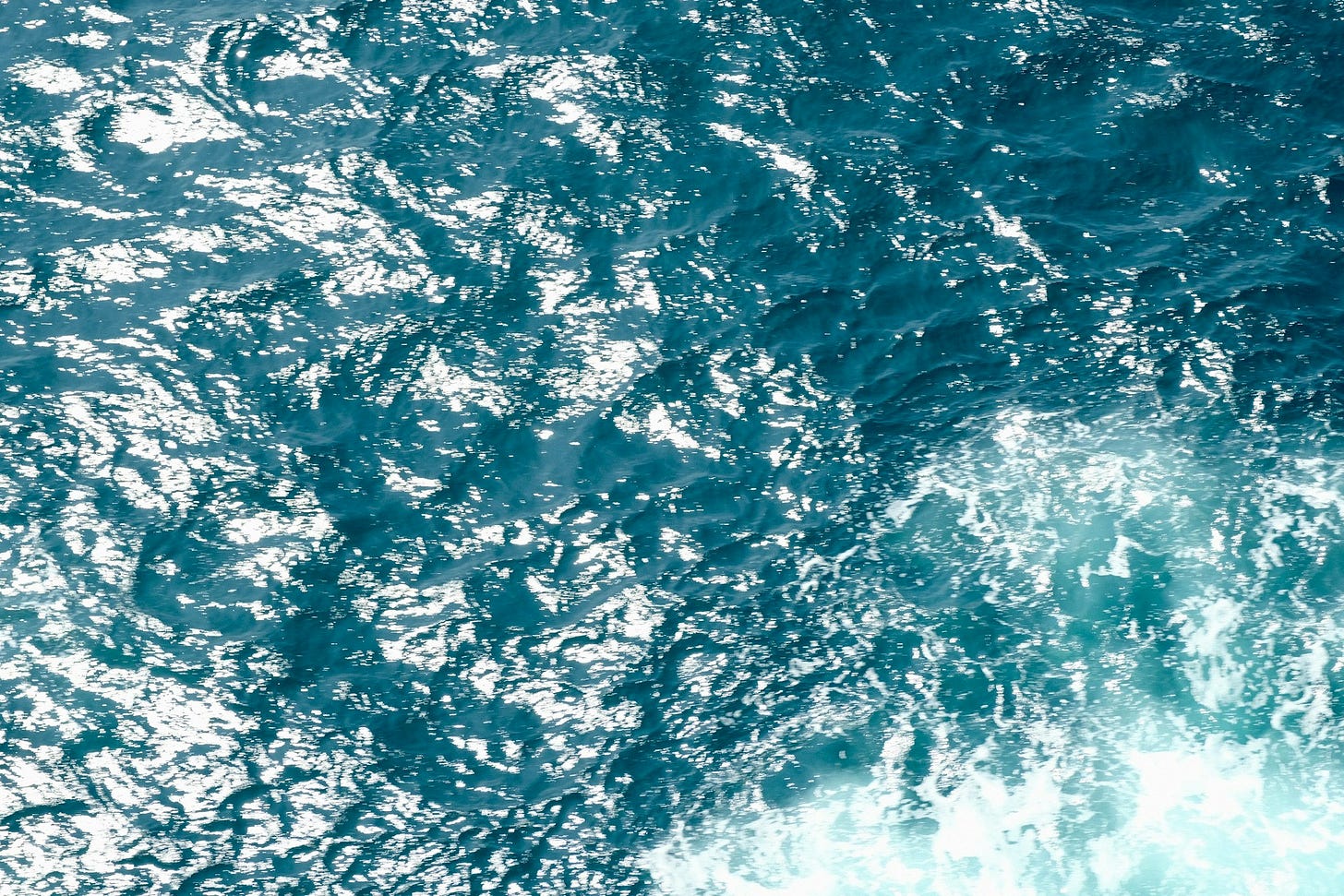On Female Power & Mermaid Stories
When asked for my favourite book to recommend, I always return to one uniquely dreamlike and surreal work of fiction.
The Seas by Samantha Hunt is an otherworldly coming-of-age tale featuring a young woman trapped in a bleak seaside town and stuck in an impossible first love. She believes she is a mermaid. She must contend with grief, loneliness, the lasting influence of the Iraq War, and the deadly consequences of fantasy.
My heart split when I finished reading this book for the first time, and a lasting love for magical realism and mermaid folklore was born.
In the years since, I’ve found myself drawn to contemporary mermaid literature again and again.
Most recently, I just finished reading The Sirens by Emilia Hart where a young woman in Australia leaves university under potentially criminal circumstances to seek answers from her older sister. They are both plagued by strange dreams, they sleepwalk, and they both struggle with an unusual skin condition. However, it appears her sister isn’t where she’s supposed to be either. Family secrets are exposed, old rifts are healed, and the power of women in a world of men is at once sinister and serene.
I picked up a copy of American Mermaid by Julia Langbein at an indie bookstore on a recent trip to Nova Scotia. Here, a bored high school English teacher writes a novel featuring an educated eco-warrior mermaid that gets the attention of Hollywood film executives. She watches in horror as her script co-writers systematically dismantle her strong female heroine into a brainless sex object, until… something strange starts happening.
Late last year, I read The Mermaid of Black Conch by Monique Roffey, where a mermaid is caught off the coast of a Caribbean island in the fishing nets of American tourists. She is strung up as a trophy and abused by foreigners and locals alike until her rescue by a local fisherman named David. The pair fall in love, but will they survive their differences, the wrath of the Americans, and the judgement of their community?
On the heels of Roffey’s work came River Mumma by Zalika Reid-Benta, where a Jamaican water deity appears to a young woman in Toronto and gives her 24 hours to complete a strange quest. In attempting to complete the deity’s request, she meets a pantheon of challengers both mythological and mundane that test the boundaries of her friendships, reconnect her with her ancestral roots, and teach her to face her quarter-life crisis bravely.
All of these books share themes of:
The destructiveness of colonialism and entitlement, sexism and patriarchy
The ocean as a refuge, a mysterious and primarily female domain
The potential for female power to be a force of creativity
All of them contain allegorical clues that can teach contemporary women to step into their power in today’s world.
Each is set in a post-colonial wasteland, where to be feminine is to be perceived as unfocused, delusional, weak, vulnerable, emotional, tragic, and easily manipulated by a masculine mainstream.
Many of the protagonists have still managed to find success despite these obstacles. They have worked to prove they are smart, capable, and can get things done within the confines of masculine ideals. Lucy (The Sirens) is accepted into a prestigious journalism program; Penny (American Mermaid) finishes writing her debut novel and it is selected for a potential movie adaptation; Alicia (River Mumma) graduates with her hard-earned degree.
The material success comes at the cost of subconscious pain however, which can manifest in unusual ways. Lucy (The Sirens) wakes up from an episode of sleepwalking, haunted by strange dreams, to find she is committing a crime; Penny (American Mermaid) sustains many compromises to her creation’s vision in the name of completing the movie script; Aycayia (The Mermaid of Black Conch) is cursed by other women for her beauty; Alicia (River Mumma) finds herself in debt with no job prospects, disconnected from her family, and the unwilling disciple of a demanding water deity.
In order to survive these trials, each protagonist must descend into a period of darkness to reclaim what it means to be whole, to be feminine, once more. Lucy (The Sirens) escapes the immediate consequences of her actions by hiding out at her sister’s abandoned house; Penny (American Mermaid) loses touch with reality and begins to over-identify with her creation; Aycayia (The Mermaid of Black Conch) rediscovers what it’s like to be human; Alicia (River Mumma) uses her wits to attempt to fulfill the deity’s request.
Each character emerges from this experience with greater understanding of their nature and can better integrate the feminine with the masculine aspects of themselves. Lucy (The Sirens) uses her memory and journalism skills to work out the truth about her sister and where she has gone; Penny (American Mermaid) eventually resolves her struggles with both the boundaries of her creative powers and the expectations of life in Hollywood; Aycayia (The Mermaid of Black Conch) must come to terms with the limitations of her body; Alicia (River Mumma) regains a sense of her lost heritage, and her confidence as well.
This is exactly the cycle described by Maureen Murdoc in her classic analysis The Heroine’s Journey, which adapts Joseph Campbell’s Hero’s Journey to a female and minority experience. It teaches women and minorities to step into their power in the contemporary world by learning to embrace the parts of themselves that mainstream society might reject. It subverts logic with intuition, independence with community, material success with creativity, and entitlement with justice.
You’ll notice that The Seas is missing from every part of this analysis. While some of its plot points seem to fit neatly into a few of Murdoc’s categories of experience, most didn’t. The Seas is its own creature, and I can’t recommend it enough.
Couple the ideas in this article with further reading:

